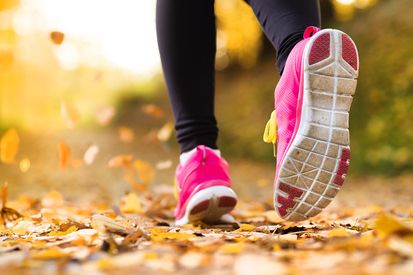
(Vienna, 13 May 2020) Most injuries related to running training manifest themselves in March. Knee injuries are particularly common. And women injure themselves more often than men. This was the finding of a study conducted by MedUni Vienna and the Inner City Orthopedic Center using data from Viennese runners. The study has recently been published in the Journal of Clinical Medicine.
Every Spring, the warmer weather lures tens of thousands of runners out onto running tracks. A statistical analysis of running-related injuries shows that there is a clear seasonal bias. Compared with the average for the other months, there are more than twice as many injury-related visits to the doctor in the month of March. "If, for example, someone is preparing for the Vienna marathon, their maximum training quota and training intensity will fall in March," explains Principal Investigator Emir Benca from MedUni Vienna's Department of Orthopedics and Trauma Surgery. "This is when overuse injuries manifest themselves, even though they might have their origins back in the winter."
As a basis for the study, the MedUni Vienna researchers gathered patient data from the Inner City Orthopedic Center for analysis. Based on the specialist diagnoses and the completed questionnaires with biometric data and medical histories of the patients, the researchers were able to build up a clear picture of the commonest injuries and the circumstances surrounding them.
Knee joints are most affected
The commonest injuries were knee injuries. Retropatellar pain syndrome (pain in the region of the kneecap) and iliotibial band syndrome, commonly known as “runner’s knee”, as well as other knee problems accounted for 41.2% of all injuries. Then came foot and ankle injuries (25.6%), lower leg/Achilles tendon injuries (13%), hip and pelvic pain (8.5%) and other injuries. The researchers were able to identify significant correlations between physical preconditions and areas of injury. "For example, people with scoliosis, that is spinal curvature, were much more susceptible to spinal, hip and pelvic injuries. Runners with bowlegs had a higher risk of sustaining knee injuries," explains Benca.
More women sustain injuries
Although, in Austria, more men than women run regularly and a lot more men take part in the Vienna City Marathon, women were significantly overrepresented in the study at a figure of 56%. "This was already suspected in other international studies and our data now confirm it," explains study author Stephan Listabarth from MedUni Vienna, "Women must be more prone to running-related injuries." This might be explained by hormonal effects or anatomical differences that affect the biomechanics of running.
Multiple causes mean acute pain
"Most injuries are not determined by a single risk factor but are the result of a combination of misalignments, previous injuries and the wrong level of training. "The musculoskeletal system needs a certain minimum loading so that it can adapt but excessive training leads to fatigue. There is therefore a "golden mean" when it comes to training schedules," explains Stephan Listabarth, himself a professional marathon runner with a personal best time of 2:18:23 hours.
Analysis of the patient data revealed an average age of 33 years, around seven years of running experience and a weekly running quota of around 3 hours per week. Most of the runners ran on asphalt (76%) and during the evening (38%). Many of the runners had a warm-up (51.6%) and cool-down routine (44.9%) and stretched before (35.9%) or after their run (83.7%).
Service: Journal of Clinical Medicine
Analysis of Running-Related Injuries: The Vienna Study
Emir Benca, Stephan Listabarth, Florian K.J. Flock, Eleonore Pablik, Claudia Fischer, Sonja M. Walzer, Ronald Dorotka, Reinhard Windhager, Pejman Ziai. J. Clin. Med. 2020, 9(2), 438; https://doi.org/10.3390/jcm9020438